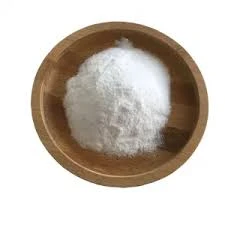The Role of Chemicals in Sludge Treatment An Overview
Sludge treatment is a critical component of wastewater management that plays a vital role in protecting public health and the environment. As urbanization and industrialization continue to grow, so does the challenge of managing the byproducts generated from these processes, primarily in the form of sludge. This semi-solid material, a byproduct of wastewater treatment, contains organic matter, nutrients, pathogens, and various contaminants, necessitating efficient treatment methods. Chemicals used in sludge treatment are essential in facilitating the dewatering, stabilization, and safe disposal of sludge.
1. Types of Sludge and Their Composition
Sludge can be categorized into primary and secondary sludge. Primary sludge is typically derived from the physical processes of sedimentation and contains a significant amount of organic and inorganic solids. On the other hand, secondary sludge results from biological processes, mainly through the activity of microorganisms that break down organic matter in the wastewater. The composition of sludge varies widely depending on the sources of wastewater and the treatment processes employed, which is why tailored chemical treatment solutions are necessary.
2. The Need for Chemical Treatment
The primary goals of sludge treatment are to reduce its volume, minimize odors, and prevent the spread of pathogens and contaminants. Chemical treatment methods are often integrated into the sludge management process to enhance its effectiveness. Key objectives include
- Dewatering The reduction of moisture content in sludge is vital for easier handling and disposal. Dewatering agents, often polymers, are added to improve separation of water from solids. - Stabilization This step involves the reduction of the organic content of sludge to prevent odors and pathogen growth. Chemicals such as lime, ferric chloride, and sodium hydroxide are commonly used to achieve stabilization.
- Odor Control Hydrogen sulfide and ammonia, byproducts of decomposition, cause unpleasant odors in sludge. Chemical agents can be added to mitigate these odors, ensuring a more pleasant working environment for operators and nearby communities.
3. Common Chemicals Used in Sludge Treatment
Several chemical agents play pivotal roles in the different stages of sludge treatment
sludge treatment chemicals

- Coagulants and Flocculants Substances like alum (aluminum sulfate), ferric chloride, and cationic polymers help clump fine particles together, aiding in their removal during dewatering processes. This leads to the formation of larger aggregates or flocs that can easily be separated from water.
- Lime (Calcium Hydroxide) Lime is widely used for sludge stabilization. It effectively raises the pH of the sludge, which leads to the inactivation of pathogens and reduces odors. Additionally, it aids in the precipitation of heavy metals.
- Chlorine and Ozonation These powerful oxidants are utilized for disinfection purposes, particularly in reducing pathogen levels in sludge. These methods ensure that treated sludge can be handled safely or repurposed for beneficial uses, such as land application.
- Phosphate Removal Agents Chemicals like ferric chloride are essential for removing phosphorus from sludge, thus mitigating problems associated with eutrophication when sludge is disposed of or utilized in agriculture.
4. Environmental Considerations
While chemical treatment of sludge is effective, it raises environmental concerns regarding the residual chemicals left in the treated product. Regulatory frameworks often dictate the permissible levels of contaminants in biosolids designated for land application or further treatment. Consequently, ongoing research and development focus on optimizing chemical treatments to minimize environmental impacts, enhance effectiveness, and promote sustainable practices.
5. Innovations and Future Directions
The field of sludge treatment is evolving, with innovations aiming to improve the efficiency and sustainability of chemical treatments. Emerging technologies like advanced oxidation processes, bioaugmentation, and the use of biodegradable polymers signify a shift toward less hazardous and more environmentally friendly options. The focus on resource recovery, such as the extraction of biogas, nutrients, and even water from sludge, underscores the importance of chemical treatment in a circular economy.
Conclusion
In summary, chemicals play a crucial role in sludge treatment, facilitating essential processes such as dewatering, stabilization, and pathogen reduction. With a myriad of chemicals available, the selection often depends on the specific characteristics of the sludge and the desired outcomes. As we navigate the complexities of wastewater management, continued innovation in chemical treatments will be central to developing sustainable practices that protect public health while promoting environmental stewardship.

